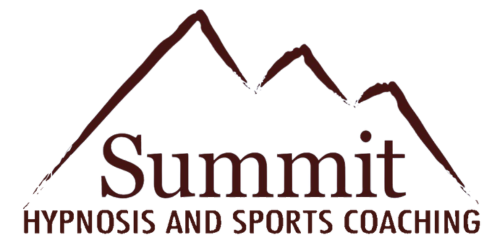[et_pb_section bb_built=”1″][et_pb_row][et_pb_column type=”1_3″][et_pb_image _builder_version=”3.15″ src=”https://summithypnosisandwellness.com/wp-content/uploads/2019/07/How-to-Get-Your-Students-to-Hear-You-By-Laura-King-Cover-Riding-Instructor.png” /][/et_pb_column][et_pb_column type=”1_3″][et_pb_image _builder_version=”3.15″ src=”https://summithypnosisandwellness.com/wp-content/uploads/2019/07/How-to-Get-Your-Students-to-Hear-You-By-Laura-King-Riding-Instructor-1.png” /][/et_pb_column][et_pb_column type=”1_3″][et_pb_image _builder_version=”3.15″ src=”https://summithypnosisandwellness.com/wp-content/uploads/2019/07/How-to-Get-Your-Students-to-Hear-You-Riding-Instructor.png” /][/et_pb_column][/et_pb_row][et_pb_row][et_pb_column type=”4_4″][et_pb_text _builder_version=”3.15″]
Part 3 – The Importance of Word Choice
NLP can help you immensely in your daily performance because it is a vehicle for self-knowledge. The more you know about yourself, the better you’ll be able to plan your transformation and growth. And, as you become comfortable using NLP, you will be able to better help your students achieve excellence.
In Part 2 of this 3-part series, we learned about 4 valuable NLP techniques that, when applied correctly, help you and your students produce and reproduce excellence. They are:
- Modeling
- Circle of Excellence
- Theatre of the Mind
- Anchoring
These techniques are wonderful to use for yourself and your students to achieve excellence, so I encourage you to practice them first on yourself, and then with your students. The next step on this journey is learning why word choice is so important when communicating with your students. Each of us has a perspective, or lens, through which we see the world. Once you know, from observation, how someone else looks at the world, you are in a better position to effectively and efficiently communicate with them.
We all use 5 senses to make sense of the world around us – to assess situations and analyze events. These senses are:
- Visual – what you see, i.e., pictures, images, color
- Auditory – what you hear, i.e., voices, sounds, words
- Kinesthetic – what you feel, i.e., touch, feelings about what you are experiencing
- Olfactory – what you smell, i.e., aromas linked to moods and memories
- Gustatory – what you taste, i.e., responses linked to food and drink
Perhaps the most helpful aspect of NLP is understanding which sense is the dominant one you and your students prefer to use when taking in and processing new information. This is especially important and helpful to me as a hypnotist. By tailoring my hypnosis sessions with each client based on their dominant sense, which I learn through observation of their word choice, I am able to affect positive change more quickly.
Research has shown that most people are visual, auditory, or kinesthetic (and far fewer are gustatory or olfactory). Since most people see, hear, feel, smell and taste, we all have a combination of these, but there is always one that dominates how we perceive our world. As you read each brief description below, see if you can figure out which one you are. Also think about your students – where do they fit in?
Visual people (55% of population) tend to focus on pictures, colors, sizes, angles, contrasts of focus, and brightness. They tend to talk fast, think in pictures and charts, and prefer to be shown how to do new things. They often speak of how they “see” things (“looks good to me,” “I see what you mean,” or “please clarify what you mean”). They pay careful attention to their appearance and the appearance of others. Their respiration is shallow and quick. They use words like:
- Appear
- Focus
- Hindsight
- Look
- Notice
- See eye-to-eye
- Watch
- Witness
Auditory people (21%) focus on words, volume, cadence, inflection, pauses, pitch, and tempo. They are good at handling people, are open to both sides of an argument, and like good questions. They think in language, talk about how things sound (“sounds good to me,” “this rings a bell,” “I’m all ears”) and are dominators of conversations. Background noises can either bug or help them. If you want them to do something, you should explain it to them (not show them or give them written instructions). They breathe deeply and speak rhythmically. They use words like:
- Boisterous
- Confess
- Deafening
- Mention
- Outspoken
- Speechless
- Tongue-tied
- Whisper
Kinesthetic people (24%) focus on feelings, texture, vibration, intensity, pressure, tension, and movement. What they perceive is often a reflection of their feelings. They are touchers and they judge situations and people by how they make them feel inside (“that doesn’t feel right to me,” “she’s so thin-skinned,” “don’t rush me,”). They breathe deeply and slowly, are more patient than the other types, and they speak slower and lower. Because they take most of their cues from their feelings, they are more prone to moodiness. They use words like:
- Calm
- Firm
- Relax
- Rush
- Solid
- Stress
- Stroke
- Unsettled
A kinesthetic dominant trainer working with a visual dominant student may be struggling to get their student to understand a transition because of their word choice. “That transition should feel more supple and smooth.” (Kinesthetic) vs. “Watch how you emerge from that transition. It should appear effortless.” (Visual). You are saying the same thing, but the second one will get the message across to the visual dominant student more quickly.
If you’re still unsure of category you fit into, try this: Write a couple of paragraphs about one of your fondest memories. As you’re writing, relive that enjoyable moment, and then read the story with an eye to your dominant word usage. Which of your senses do you tend to see your world through? Examine your verbiage. Which sense appears to be dominant in your story?
This new knowledge of word choice will help you communicate better with your students. Remember that your effectiveness as a trainer is tied to how specifically and intensely your verbal coaching appeals to the lens that your student uses to process new information. Start listening to your students with an ear for their word choices. Jot some notes in their file to remind you of your discovery about each student. Choose words that mirror the students’ preferences, and see how quickly they progress under your new and improved tutelage.
[/et_pb_text][/et_pb_column][/et_pb_row][/et_pb_section]
